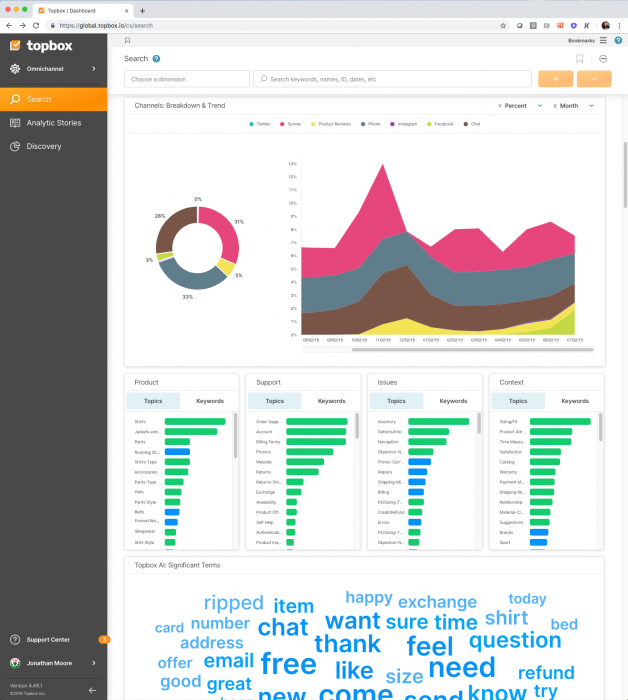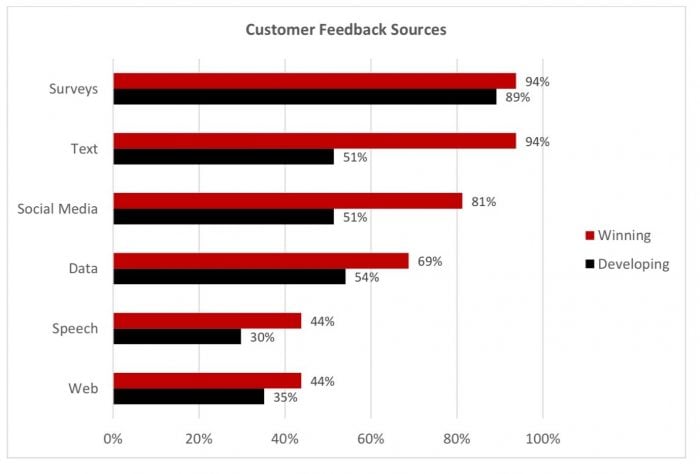If you love fly-fishing, dogs, or spending time outdoors, you probably know about Orvis, the oldest mail-order company in the U.S. The company is justifiably proud of its products and reputation for customer service — just take a look at the 18K Bizrate reviews which add up to an overall satisfaction score of 9.2.
This recent review sums up how many customers view Orvis:
Orvis has TERRIFIC products, GRRREAT Customer Service and an online catalog that is EASY to NAVIGATE for a Novice !!! Their Consistency over the YEARS has Earned my Business and I’m HaPpPpY to use them for ALL my Fly Fishing Desires… ( : I Believe you will also become a Customer once you try their Products. FISH ON HAPPPY ANGLERS !!!
How did Orvis continue to prosper while other iconic brands like Sears failed? By continuing to listen to customers and improve.
The company started a formal Voice of Customer (VoC) program in 2008, mainly using Bizrate surveys to get product feedback, according to Lisa Lavin, Director of Customer Experience. In addition to Bizrate, Lavin says Orvis has many other sources of feedback including a ticketing system and lots and lots of phone calls. The challenge: gaining insight from many disparate feedback sources so that the right action could be taken.
Enter Topbox
Lavin’s search for a VoC analytics tool eventually led to Topbox, a relatively new player in the VoC tech industry. Founded in 2014 by BPO call center veterans Chris Tranquill, Jeff Yentis, and Brian Timmons. the company initially focused on speech analytics — a great fit to help Lavin make sense of call center recordings. But a pivot about 18 months ago, with the help of an investment by Telescope Partners, enabled Topbox to offer “omnichannel” analytics — the ability to look across multiple sources of feedback.
Tranquill says that the secret sauce for Topbox is “agnostic aggregation and normalization” that enables AI-based analytics on disparate types of feedback — including call recordings (transcribed to text), chat sessions, surveys, emails, and more. Feedback data can be enriched with customer metadata such as customer value from CRM systems, which helps to prioritize action.
Here’s an illustration:

Mickey Arabelovic, founder of Telescope and a former partner at Sequoia Capital, told me that Topbox’s key point of differentiation is to be “like Switzerland” and “stitch together” an unbiased view of multi-channel feedback. He observed that feedback data is living in data silos, with analytics tailored for each channel.
Faith Adams, CX analyst at Forrester Research, has been a champion of cross-channel VoC analytics for many years. While some clients use up to 10 different tools, most don’t integrate due to a combination of technology and organization silos. She also sees some confusion in the market, because many VoC vendors claim to offer a “complete” CX platform, but have significant differences due to heritage and development priorities. It’s critical to “invest the right time and energy to vet vendors,” advises Adams.
Shedding Light on Feedback
My family recently installed custom window treatments in our condo, with a little help from Hunter Douglas, a global provider in this industry. Like most consumers, we enlisted a local dealer to help sort out many complicated options. If we had any feedback, we’d share it with the dealer, not the vendor.
According to Melinda Keith, Senior Director of Customer Support at Hunter Douglas, dealers are most likely to use the phone to report any issues, although chat and email are also used. For example, a dealer might report a defect in one particular window blind. If not corrected quickly, the issue could create headaches for many more of the 10,000 dealers and their customers.
Like Orvis, Hunter Douglas started using Topbox to analyze phone conversations. Bizrate reviews and surveys (captured by another VoC vendor) have been added to the mix more recently. Now, says Keith, Hunter Douglas can validate quantitative survey data with verbatims captured in customer interactions, to find and fix issues with a particular product or plant. Furthermore, Keith says an “out of the box” employee scorecard helped improve the quality of customer support provided by over 300 agents.
Bottom line: while finding issues in one channel is certainly helpful, cross-channel VoC analysis helps validate and focus attention on the top issues, fast!
Summary and Recommendations
I’m happy to see cross-channel VoC getting more attention. It’s not that the VoC industry has completely ignored the problem; there are some positive signs as you can read in my recent article on advanced VoC analytics. What’s significant about Topbox is their focus on this issue.
My recent CX study found that — no surprise — VoC is a critical practice for CX initiatives. However, this study found a striking difference in the use of non-survey feedback sources. Winning CX initiatives use text and social media at least 80% of the time, compared to half of those in a Developing stage. Noticeable gaps were also found in the usage of operational data, call center recordings, and website feedback.

While specialized tools are required for different feedback channels, don’t let them reinforce the “silo-itis” problem that undermines many CX initiatives. A cross-channel approach can help bring clarity to the top customer issues, and also help the organization see the complete customer journey. That’s another trait of CX Winners.



